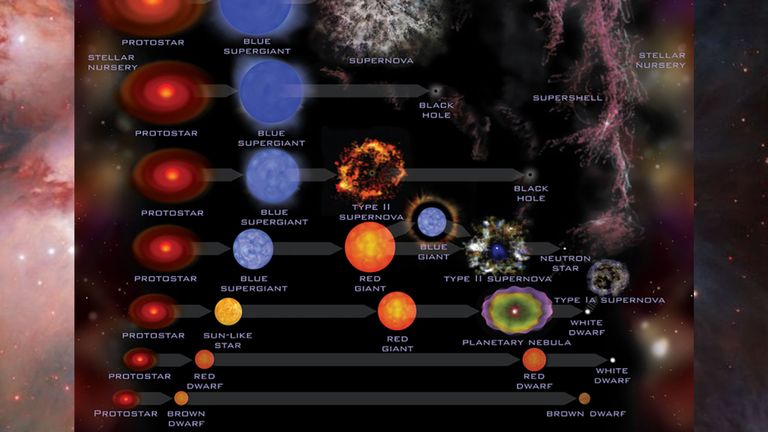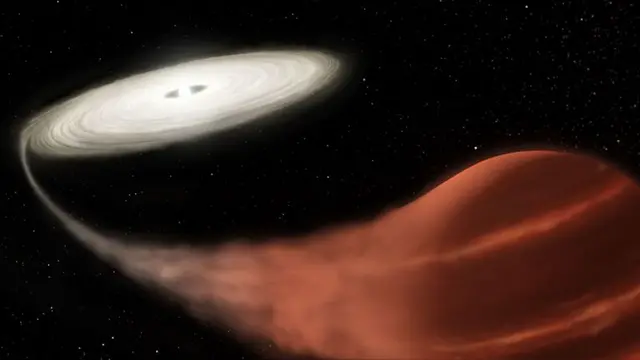Astronomers have discovered a "vampire" star just 3,000 light years from Earth which is in the middle of a feeding frenzy.
In a very rare event, the white dwarf star located near the constellation of Scorpio has been spotted "gorging" on a much smaller brown dwarf.
Ryan Ridden-Harper, a PhD candidate at the Australian National University, led the research into the event while analysing data collected from NASA's recently decommissioned Kepler Space Telescope.
He described it as a "super-outburst from a dwarf nova, which can be thought of as a vampire star system... lurking in the darkness of space".
The star system "is incredibly faint, about one million times fainter than what our eyes can see", according to Mr Ridden-Harper, the lead author on the study published in the journal Monthly Notices of the Royal Astronomical Society.
But the data his team analysed showed that there was a sudden momentary brightness from it which lasted approximately a month.
Mr Ridden-Harper added: "The incredible data from Kepler reveals a 30-day period during which the dwarf nova rapidly became 1,600 times brighter before dimming quickly and gradually returning to its normal brightness.
"The spike in brightness was caused by material stripped from the brown dwarf that's being coiled around the white dwarf in a disc.
"That disc reached up to 11,700 degrees celsius at the peak of the super-outburst."
The researchers, who collaborated with the Space Telescope Science Institute and the University of Notre Dame in the US, said their study provides new insights into these "vampire" star systems.

Image:An infographic showing the different way stars evolve. Pic: NASA/JPL
White dwarf stars are the most common type of stars in the Milky Way galaxy.
They have burned through all of their hydrogen fuel and then swollen to red giants while they burned through their helium until all that is left is the core, usually composed of oxygen and carbon.
Because white dwarf stars are so small, the material inside of them no longer undergoes fusion reactions.
Instead of being kept intact by this energy, they are instead prevented from collapsing in on themselves solely because of the quantum mechanics effects of the electrons at their core.
Eventually the carbon cores of white dwarf stars will crystallise, potentially forming enormous diamonds the size of the Earth.
There is a further hypothetical state for these white dwarf stars - cold black dwarfs - but the length of time it would take for a star to reach this state is calculated to be greater than the age of the universe.
The next step for the team's research, Mr Ridden-Harper said, will be to combine the Kepler data with the information gathered from Nasa's planet-hunting spacecraft called Transiting Exoplanet Survey Satellite (Tess).
"This will give us the best understanding of the most rapid explosions in the universe," he said. "Along the way, we might discover some rare events that no other telescope could find."
 简体中文
简体中文

